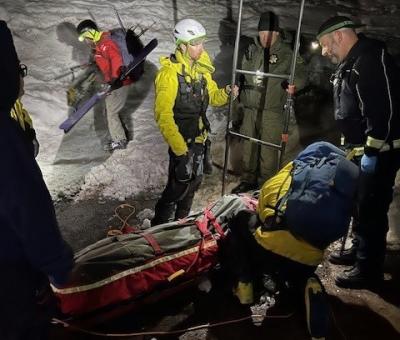Common Errors Lead to Serious Consequences
These common mistakes were the basis for actual rescue missions. Please take note:
- Climbing Mt. Shasta alone: "I couldn't find anyone to go, and I was only going to go a short ways."
- Climbing or traversing ice fields alone or with a partner who has little to no self-arrest skills.
- Leaving your partner behind for any reason, especially when you are out of cell or radio service. If your partner can't make to where you are going, then return with them to base camp.
- Not wearing a life jacket. Most drowning victims are "good swimmers'" and they were going to be in the water for only a "minute or so" to cross a river or a lake.
- Leaving your equipment or summit pack behind (including medications) because it was heavy, you didn't think you would need it, and you were just a little ways from the top.
- Novices climbing too difficult a route, thinking it didn't look that hard, but pushed onward beyond their physical ability to the point of no return.
- "Weekend Warriors" trying to hunt or hike too far in too rugged, high altitude terrain without first building up their physical stamina and condition.
- Getting disoriented in a white out blowing blizzard snowstorm. The storm arises so suddenly that you find yourself a "ridge or two" away from your believed location. You didn't think the weather would change that fast. After all, it was 70 degrees in town!
- A VFR (visual flight regulations) pilot trying to just "make it" to the next landing field through a summer squall and thunder storm.
- Climbing UP a steep rock surface is a lot easier than trying to climb back DOWN without proper equipment and agility.
- While hiking around the lake, you tell your child not to go near the water, but loose sight of them for a few minutes. "It all happened so fast..."
- A snowboarder looking for that thrill of all thrills...back country deep powder...ends up head over heels. Literally. The only thing visible is the bottom of the board.


